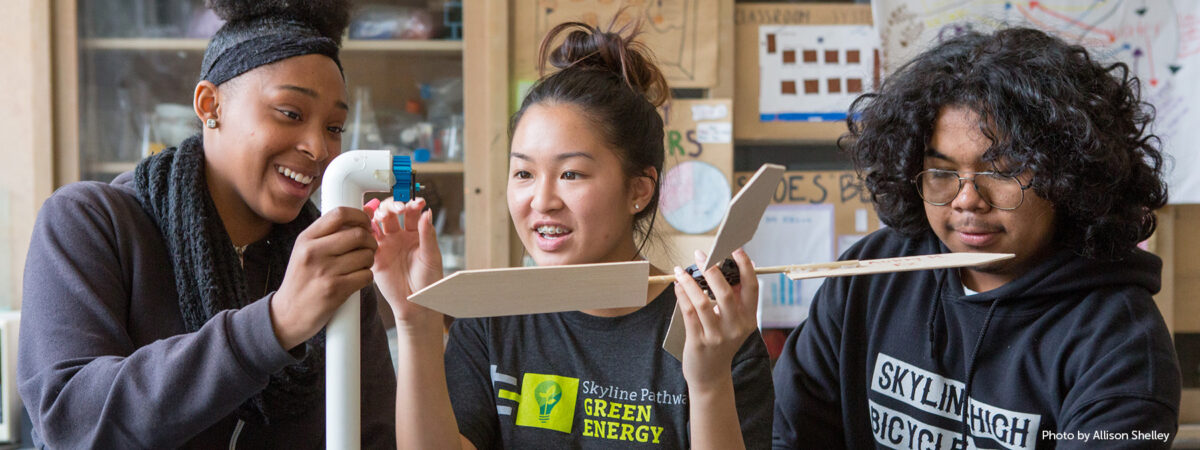
Science class offers opportunities to apply mathematical reasoning about data when conducting investigations and explaining phenomena. Activities in the OpenSciEd curriculum provide opportunities for learners to reason about data—for instance, to explain why things sometimes get damaged when they hit each other.
In our OpenSciEd Middle School Mathematics Study, we observed classroom instruction and spoke with teachers to learn 1) how OpenSciEd’s design enables students to reason about data in scientific investigations and 2) what supports help teachers promote mathematical reasoning about data in science.
Many students can make simple scientific claims based on their everyday experiences. But when students engage in data-based investigations in OpenSciEd, they generate empirical evidence to support increasingly powerful claims.
For example, in an OpenSciEd investigation about how an object’s mass and speed relate to the amount of damage it could inflict in a collision, most students know from experience that increasing the object’s speed or mass will increase the damage. But gathering and analyzing data is necessary to support more powerful claims, such as whether doubling speed or doubling mass will increase the damage more. A powerful scientific claim about mass, speed, and damage enables predictions that could, for instance, help define safety features of cars or bicycle helmets.
While there is value in working with student-gathered data, there is a trade-off between students gathering data and using existing or simulated data. In the mass-speed-damage investigation, students should observe that damage doubles when mass doubles, but damage quadruples when speed doubles. On a graph, the mass data should be linear, but the speed data should curve upward; however, student-gathered data are not always accurate or precise enough to illustrate these mathematical relationships that reveal the big idea behind a phenomenon. In this lesson, students used cleaner data from simulations and videos to identify and make sense of these patterns in the data.
Typical science investigations tend to focus narrowly on gathering, visualizing, then identifying patterns in data. But the OpenSciEd curriculum goes further; the OpenSciEd teacher guide helps teachers prepare students to use mathematics to interpret their data and encourage collaboration to improve explanations based on their reasoning. For instance, some teachers introduced the mass-speed-damage investigation by eliciting students’ ideas about how to measure damage (which students may not know how to quantify), then facilitated discussions about how to more precisely quantify their previous claims about mass, speed, and damage.
To promote reasoning about data in their classrooms, science teachers must know their students’ current mathematics knowledge about data. This way, they can help students leverage that knowledge toward sensemaking about data outside of the math classroom. For example, students may know how to construct a graph from data, but they might need guidance to describe the meaning of a pattern they see in the graph.
Our teacher resources and professional learning experiences are designed to help science teachers identify what mathematics knowledge students bring and use that knowledge to meet students where they are. For instance, we engaged OpenSciEd teachers in a three-day workshop on supporting students with data literacy and provided teachers with supporting resources to aid lesson planning. We also conducted pre-lesson check-ins with teachers to help identify specific opportunities for data reasoning, which helped teachers focus on the particular ways mathematical reasoning with data helps students achieve lesson learning goals.
Teachers reported these experiences and resources to be helpful. One teacher noted that the resource on engaging students with data “is going to see a lot of action in my lesson planning! It breaks down how students should interact with content at different stages of their journey… easy to use and easy to apply to lessons that are data rich.”
Learn more about how we’re helping science teachers connect math and science in middle school classrooms and stay tuned for new insights from our ongoing analysis of data from the study.
The authors gratefully acknowledge the support of the Gates Foundation for this work.